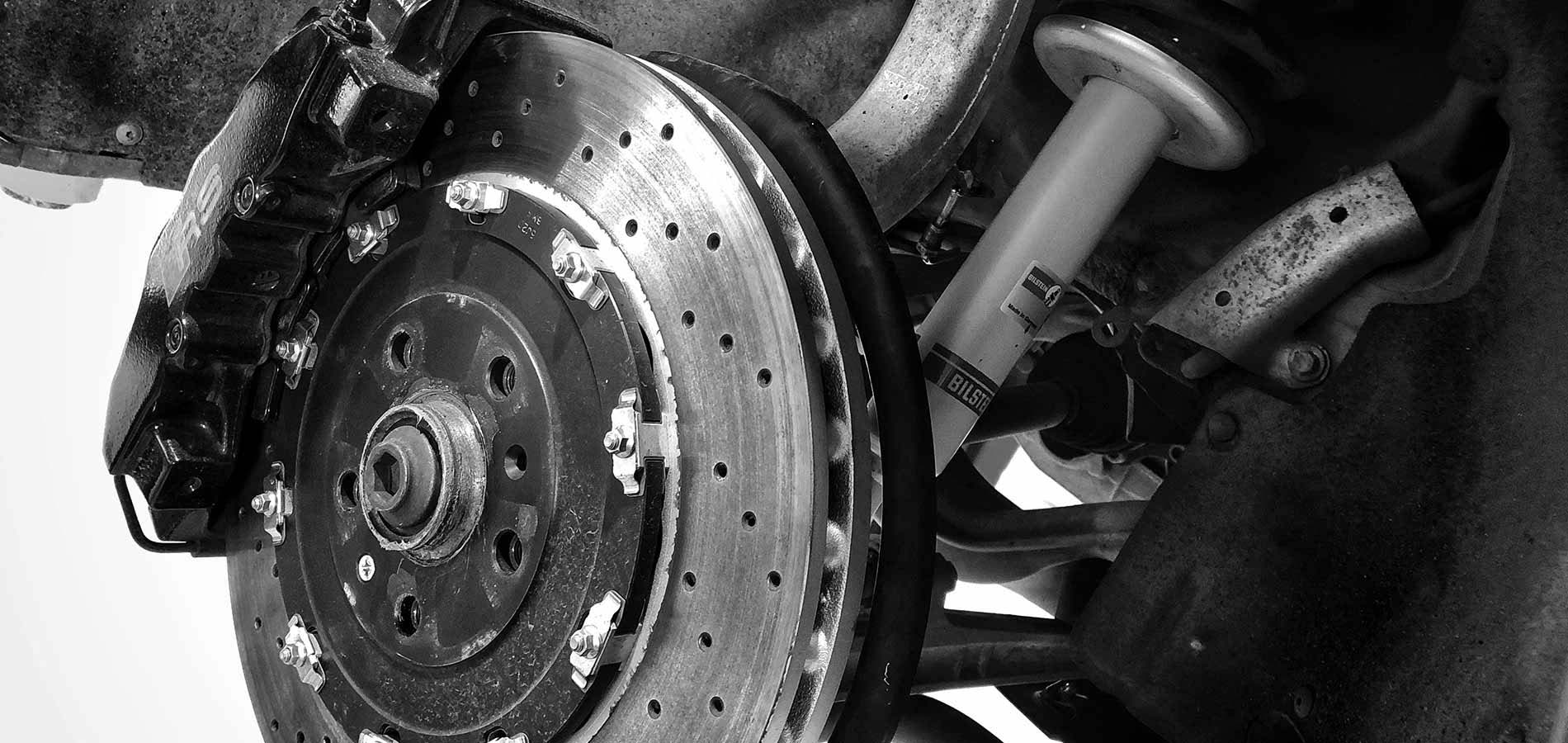Audi RS4 Brake & Suspension Upgrade
Brakes aren’t always the most talked about upgrade, but if you want your car to go fast, you will most likely want it to stop effectively as well.
Our customer came in with concerns about squealing brakes and clunking in the suspension when driving his 2008 Audi RS4. We discovered worn brake discs and leaking struts/shocks so it’s brake and suspension upgrade time!
The RS4 is a power house of torque and fantastic speed. The agility and cornering capabilities are quite good for a sedan this size, and to perform while making every 420-horse power count, proper braking and suspension components are a must.
To our delight, our customer agreed, and the Motor Werke team got to work enhancing this beauty.
Metallic to Ceramic
Ceramic pads and rotors have come to be a popular choice with our customers when replacing and upgrading brake systems. Depending on the type of vehicle, what it is used for, and the budget being worked with, there are pros and cons when opting for this particular brake component material.
First, a Little History
Before the use of metallic and ceramic compounds, brake pads were made of asbestos fibers back in the day. The properties of asbestos made it a good candidate for absorption and dissipation of heat generated when stopping.
Of course, the use of asbestos was discontinued due to health risks during the early 1970’s. This lead to the use of organic and metallic compound brake pads.
Organic brake pads are made up of glass and rubber, bound together by a resin that is highly heat resistant. These brake pads tend to be quiet but wear quickly do to the softness of materials used. They also produce a lot of brake dust, which as we know, can lead to paint damage.
Metallic pads are composed of copper, graphite, and steel. They are much more durable than organic and are a better option for heavier vehicles. Their durability means a better resistance to brake fade and will not need to be replaced as often.
As time went on, organic and metallic compounds were combined to make hybrid brake pads that take the benefits of each to make a superior pad. This is what is commonly used on vehicles today.
Enter Ceramics
Ceramic brakes are specially designed to withstand intense heat and, because of their incredible cooling properties, are more resistant to warping or deforming. They tend to be less abrasive and therefore not as hard on rotors as their metallic counterparts. Because of their heat-dissipating capabilities and less-aggressive material, they last longer than traditional organic and metallic compound brakes.
Ceramic brakes are composed of stacked glass ceramic fibers, filler material, bonding agents, and small amounts of metal. They reduce black brake dust on wheels by as much as 80%!… this is the main factor for drivers knowing they can now keep their wheels much cleaner. Ceramic materials do not corrode, which is beneficial when confronted with moisture and salt in the winter months.
Another great benefit to carbon brake pads and rotors is the obvious weight reduction. Ceramic materials are much lighter than metallic, especially when talking about ceramic rotors compared to cast-iron rotors. The less the brake components weigh, the more the vehicle’s unsprung weight is reduced, which means better handling and performance.
Our Audi RS4
We provided a few options for both pads and rotors. Our customer opted for Akebono Euro Ultra-Premium ceramic brake pads paired with Brembo UV-coated rotors. These rotors are superior in resistance to corrosion, as well as aesthetically pleasing when admiring the brakes through the wheels. The combination of ceramic brake pads and UV-coated rotors will provide exceptional braking power and performance.
Put a Little (Less) Bounce in Your Step
A car’s suspension provides steering stability, handling, and balance while driving down the road. Shock absorbers use dampening to control unwanted spring motion. They reduce the vibratory motions by transforming kinetic energy of suspension movement into heat energy that is then dissipated through hydraulic fluid. Having the right shock assembly makes all the difference when it comes to your driving experience.
OE to Bilstein
The original equipment hydraulic dampening control shocks were removed and replaced with Bilstein B8 Performance shock assemblies. Though these are non-adjustable, it is an upgrade performance-wise, and much more cost-effective than replacement of all OEM Audi parts.
Bilstein’s high-performance gas-pressure struts and shock absorbers are manufactured with better dampening and stronger strut tube, using the heftier part of the shock to dissipate side loads. The advantages of this technology are better road handling, greater stability, and more accurate steering.
This brake and suspension upgrade came together nicely. If you’re experiencing the same issues, contact us today and book an appointment.





